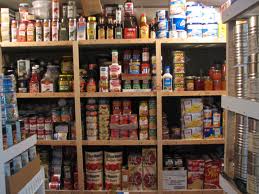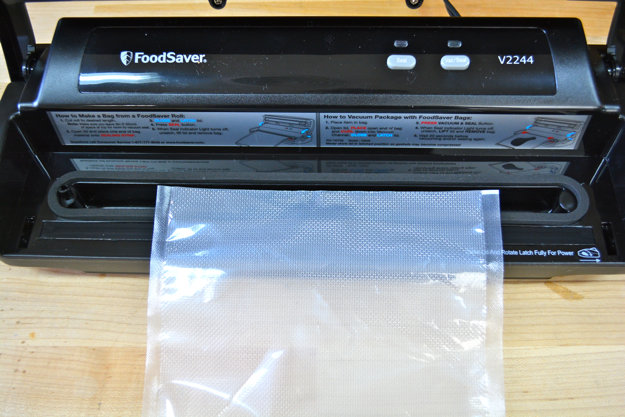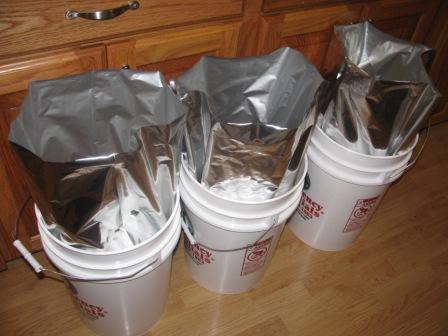Food Storage, another look!
Food Storage, another look!
 Food storage is easy, storing food to get the most length of storage out of it and to keep it as safe as possible while not taking up the entire house with towers of cans can be a bit more work! However, since food is essential for life, it’s worth doing it right and taking a bit of time. Once you get used to doing it, it becomes habit.
Food storage is easy, storing food to get the most length of storage out of it and to keep it as safe as possible while not taking up the entire house with towers of cans can be a bit more work! However, since food is essential for life, it’s worth doing it right and taking a bit of time. Once you get used to doing it, it becomes habit.
My first and foremost rule to storing food for the longest shelf life and no pest issues is this: IF IT COMES IN A BOX OR PAPER BAG, REPACKAGE IT! There are many bugs that live on the glue in those packages. Pests of all kinds can get through regular store packaging and decimate you food preps. How do you repackage it to ensure long life and safety is a question I am often asked. Here is what I do after a normal shopping trip:
 I arrive home with a great sale item, last week it was Betty Crocker Scalloped Potatoes on sale for $0.78 a box! I got 18 of them. Way too much for just putting on a shelf and hoping for the best. I got out my scissors, my vacuum sealer and bags. I opened the package, cut off the directions, put the bag of potatoes and sauce mix in the bag along with the directions. I partially vacuumed the bag (so as not to crush the taters) and then sealed it. After I had them all done, I took them to my pantry and tossed them in the bucket marked “flavored potatoes”. Done. (yes, I put a piece of tape with the date on it too)
I arrive home with a great sale item, last week it was Betty Crocker Scalloped Potatoes on sale for $0.78 a box! I got 18 of them. Way too much for just putting on a shelf and hoping for the best. I got out my scissors, my vacuum sealer and bags. I opened the package, cut off the directions, put the bag of potatoes and sauce mix in the bag along with the directions. I partially vacuumed the bag (so as not to crush the taters) and then sealed it. After I had them all done, I took them to my pantry and tossed them in the bucket marked “flavored potatoes”. Done. (yes, I put a piece of tape with the date on it too)
I do this with pasta, beans, some sugars and rice. Simple, easy and effective. They should be good, safe and ready to go for 5 years.
 Long Term Food Storage is basically the same, but I use lined 5 gallon buckets and oxygen absorbers. For instance, I got bags of whole wheat that I will use when my flour runs out. I got a mylar bag, and put it in the bucket, opened it up and added the wheat. I tossed in about 2000cc’s of oxygen absorbers. I then hand expressed as much air as possible.
Long Term Food Storage is basically the same, but I use lined 5 gallon buckets and oxygen absorbers. For instance, I got bags of whole wheat that I will use when my flour runs out. I got a mylar bag, and put it in the bucket, opened it up and added the wheat. I tossed in about 2000cc’s of oxygen absorbers. I then hand expressed as much air as possible.
I use my iron to seal the bag almost to the end. Then I fold up the bag and expressed the last bit of air and seal to the end. I put the lid on the bucket and mark the bucket with the contents and the date. I do this with white sugar, oats and cornmeal. Most of it will last for 20 years.
I can stack the food storage tubs, which are filled with meal size packages. I can also stack the buckets which are mostly filled with single bulk items. These are tucked away in all sorts of places. I am lucky to have a dry basement, but many people use spare bedrooms, home offices, closets or under the bed space. At times, I have used drapes over my tubs and used them as end tables. I know one person who pulled her couch out from the wall and stacked her tubs, put a cloth over them and calls it her “sofa table”.
Much of my food storage is normal, every day stuff that we eat daily or weekly. These are mostly canned goods. For those, I have a rotation system like a grocery store. I put the new items I purchase in the back and bring the rest forward. The expiration dates are already on them, but if you want, you can use a marker and put the date you bought it on the can. I have learned that most items are good well beyond the “best if used by” date. If you are uncomfortable with that, then buy the items with the farthest away “use by” date and make sure you keep rotating. (tip: look at the back of the shelf in the grocery. Sometimes they have different dates from what is in front). By storing what we eat and eating what we store, I rarely have a problem with anything going “out of date”.
Protect your food from freezing, moisture and air. If you can do this, it usually is protected from pests as well.
Re-posted with permission from APN
Food food storage Food Storage another look long-term mylar bag oxygen absorbers storing vacuum sealer

